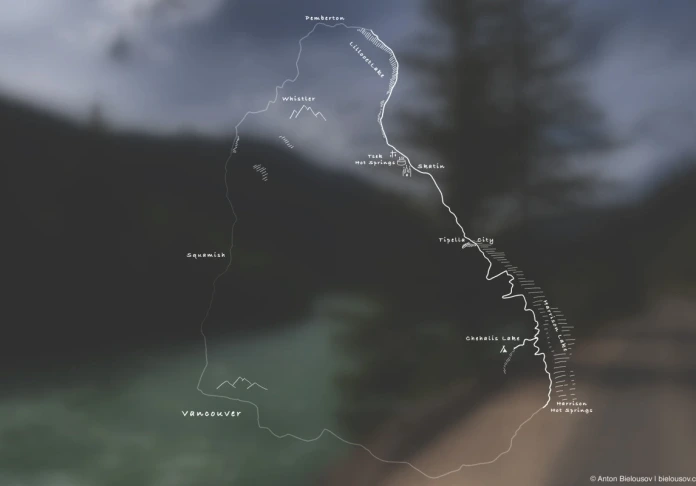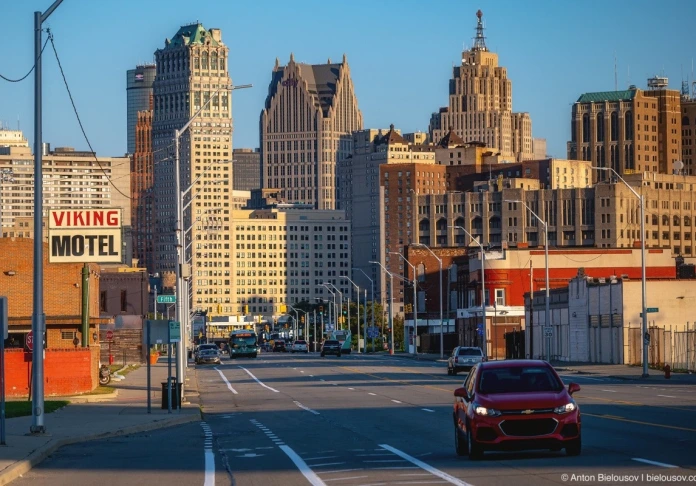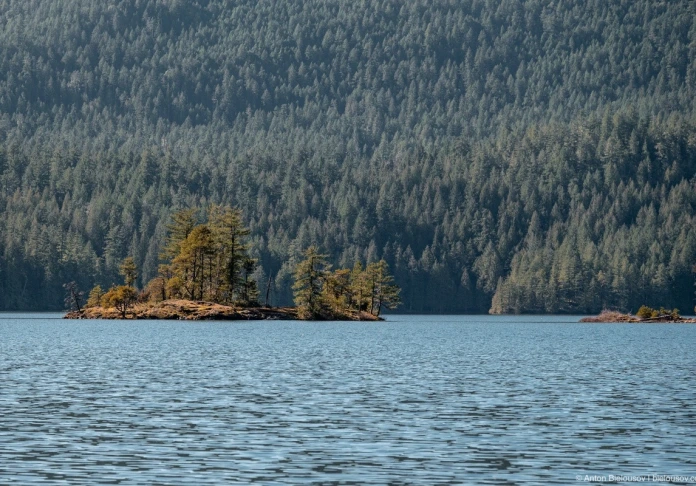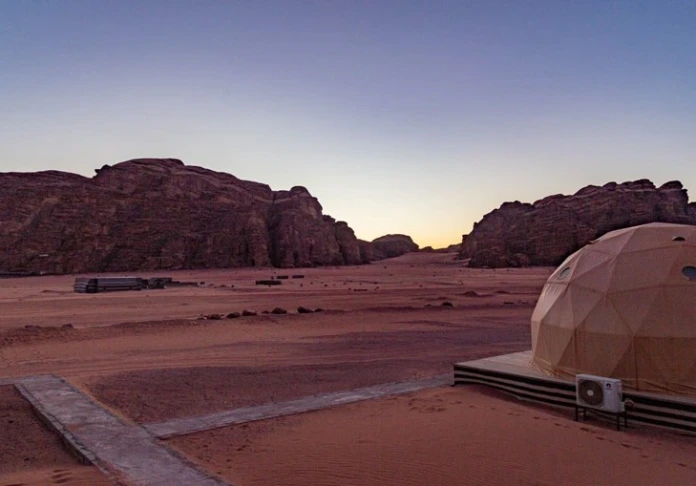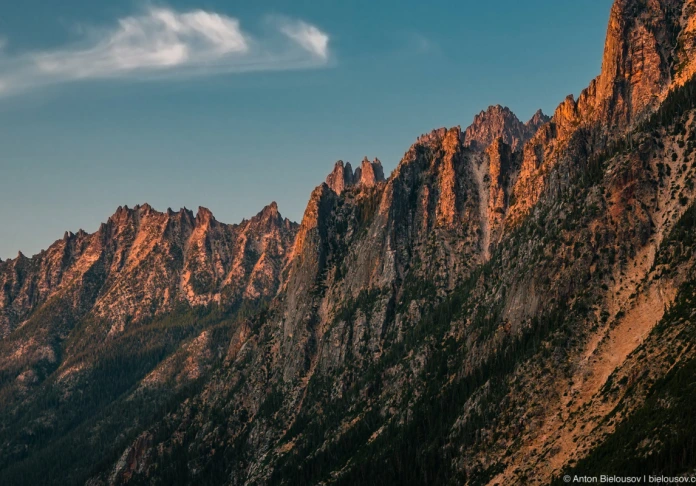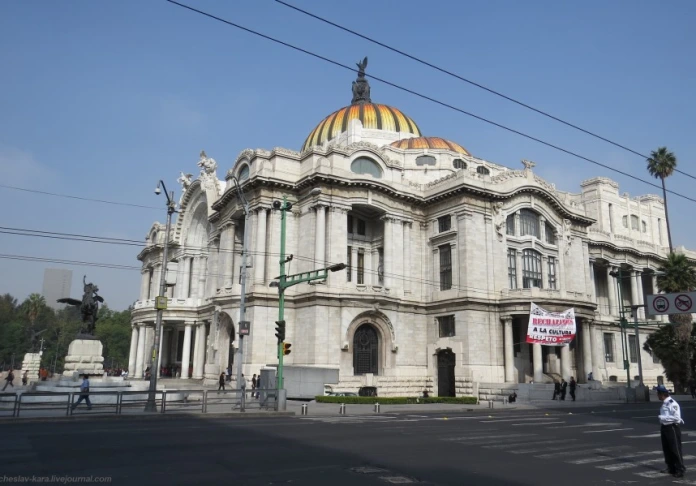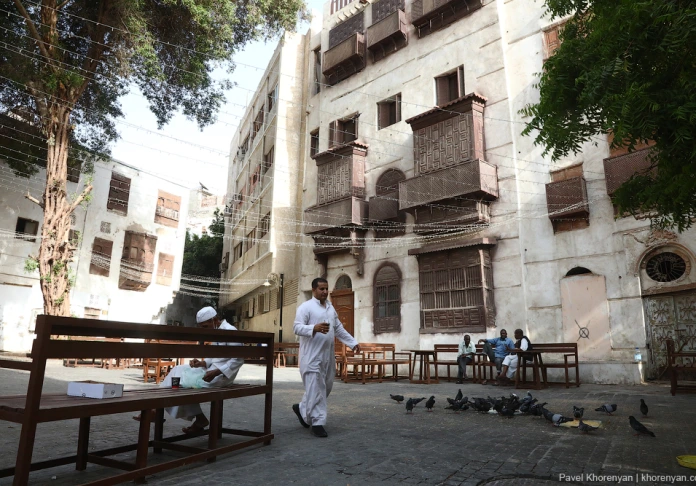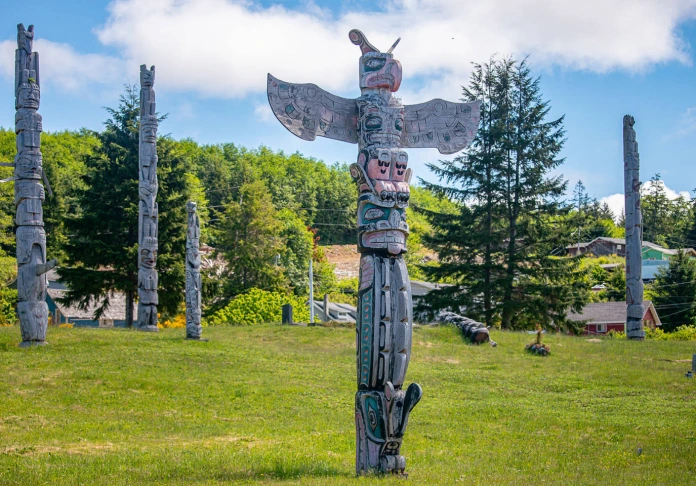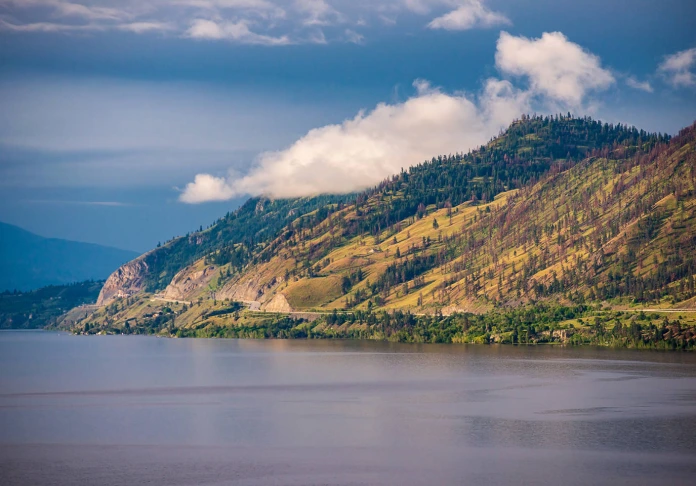Santiago de Compostela
It is difficult to write about the city, where the past lives on a par with the present and the future, and religion should be behind you on all its old streets ... The more I wanted to finally write about it, the harder it was to start because too much had to understand itself, too much to explain too many characters to find. Of course, today there are more tourists than we would like, but if you put a goal to feel the city, nothing and nobody can prevent (simple concentration concentration ...) ...
But I will not weary ... star led us to Santiago -de Compostela.
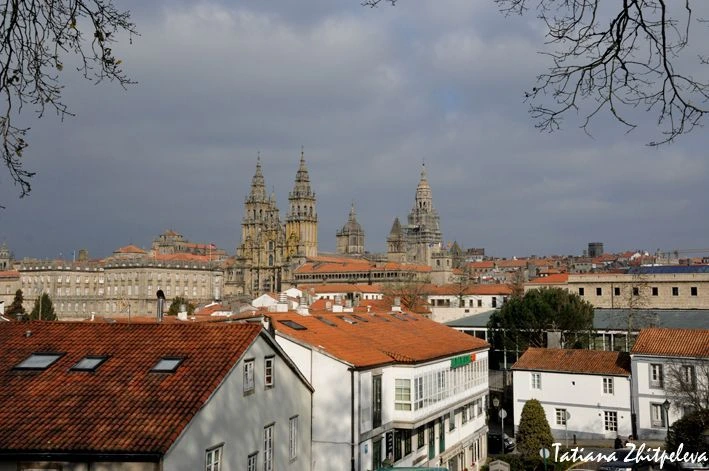
The whole town is a real space in miniature, where around one of the main Christian shrines - the Cathedral of St. James, with its relics - "circling" thousands of small churches and monasteries. It was formed around the cathedral city of the present, it was he who for many centuries attracts circling around the world in turmoil days people.
Around the 9th century Santiago de Compostela was the third most important place for Christians.
In 813, the hermit Pelagius (Pelayo) who lived not the future site of the city, received a revelation about finding the relics of the Apostle James, who was beheaded in 43 by order of Herod Agrippa. It is said that a long time James preached in Spain, and after his death, his remains were brought back to the boat and his disciples buried on the west coast of Galicia. Legend has it that a few days after seeing Pelayo shepherds saw the stars in the sky, stopped over the place where later was discovered sarcophagus with the body of Jacob. Therefore, the settlement, which arose on the site, was named Compostela from the Latin "Campus Stella" - "Field of Stars."
It is said that after the recognition of the remains of Bishop Teodomiro to come to worship him even Charlemagne. From that moment, Santiago de Compostela became one of the main objectives of pilgrims from around the world. The first pilgrim, whose name we know, was the bishop Godescalc of Benevento (Gottschalk) from Le Puy (this happened in the winter's 950-51).
It should also be said that the idea of pilgrimage was based not only on a visit to the holy relics, but has been associated with the legend of Charlemagne and Roland, and most importantly mysteriously was merged with the Milky Way, which leads to the Finis Terrae (end of the earth). On the way pilgrims were guided by the stars, so sometimes called the Way of St. James "Dear Stars", by analogy with the name of the city of Compostela. It should also say that in some way through the distance on earth, then the walls are installed peculiar pointers - shells of Saint James. Very many-valued element ... it is not only a sink, as a symbol of pilgrimage, but also a stylized image of the star, pointing to the burial place of St. And it is just a metal figure, and how much sense
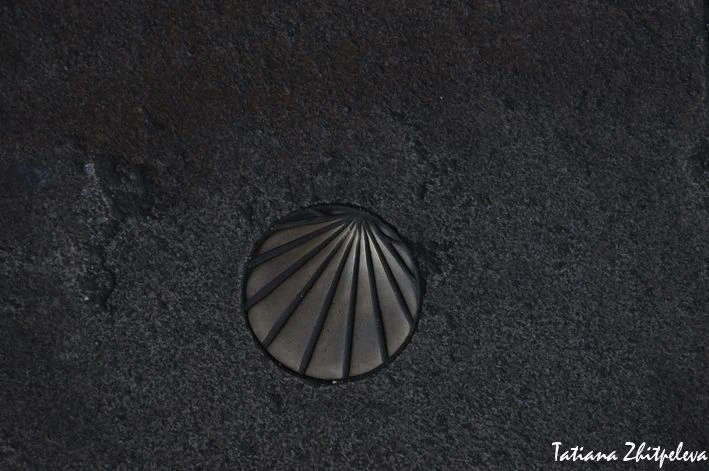
The photo is specially posted up a base to show how the sink is transformed into rays of a star. By the way, speaking of the sink (since about the star told), you should tell whence came this image. The fact that one of the first places of pilgrimage (after Jerusalem and Rome, of course) was the Mont Saint-Michel. Pilgrims coming back often took with them some of the stone fortress. It would have pilfered, but issued a decree banning. Had to find a substitute ... and since the monastery is located on the beach, they began to pick up a souvenir shell. And there was this symbol of pilgrimage. By the way, today pilgrims also produce images of shells, as a symbol of the traversed path.
Long gain entry ... right ... we have reached the end point of the road of Saint James on the plane ... not so honorable, but with a small amount of time and great interest - the only option.
The card found at the office of pilgrims (that is the name). By the way, the card was fine: the most marked all more or less important and interesting places, and most importantly laid several routes that allow, depending on the time and mode of travel to explore, to experience the city (walking route for cycling, the option to call on the machine where ).
We chose a simple walking route, which began with Praza do Obradorio (Spanish I am not friends, so some names will be ... without translation to the word praza - area, igrexa - church), surrounded by City Hall, Rector of the University of the local . And in the middle of all this rises up the center of the cosmos - the Cathedral of St. James.
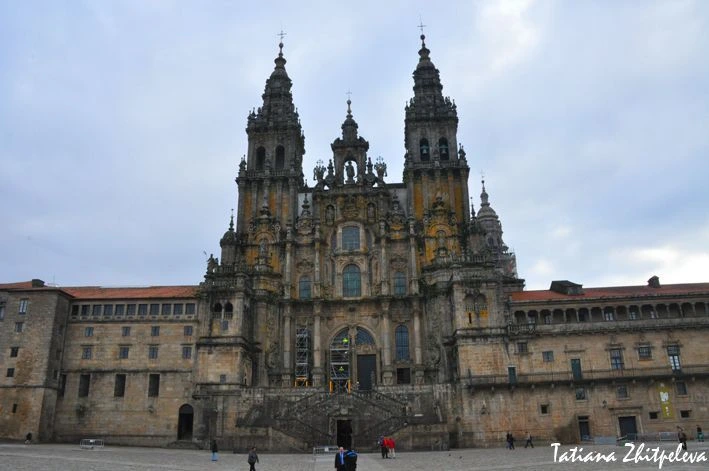
But before exploring, go for a second round the corner to the university library
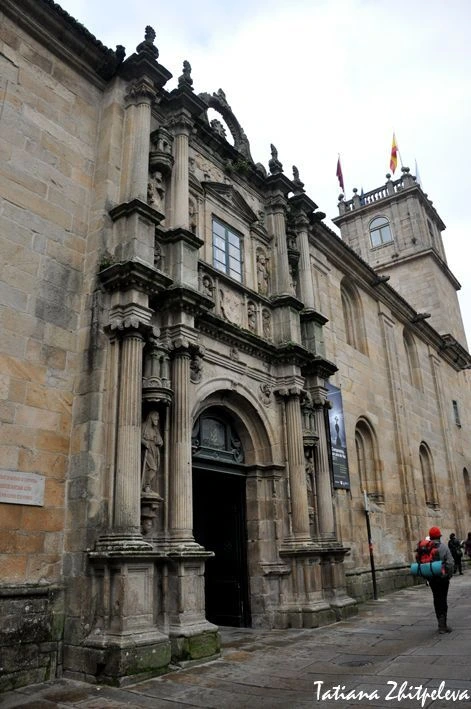
In the rooms themselves, I did not dare to go, but happy wandered through the medieval carved courtyard with a statue of Archbishop Fonseca.
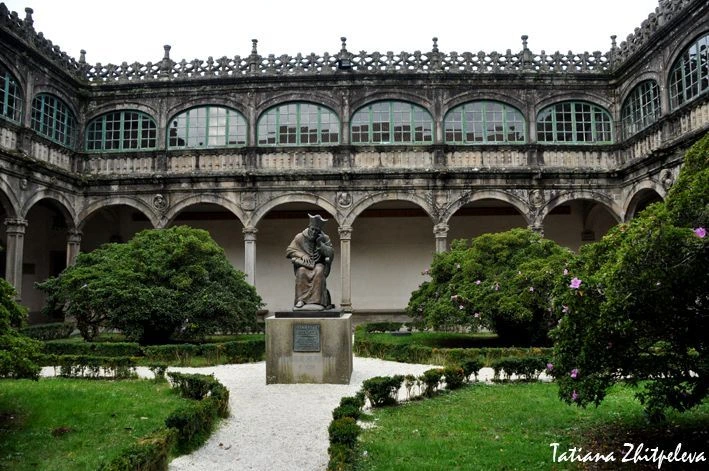
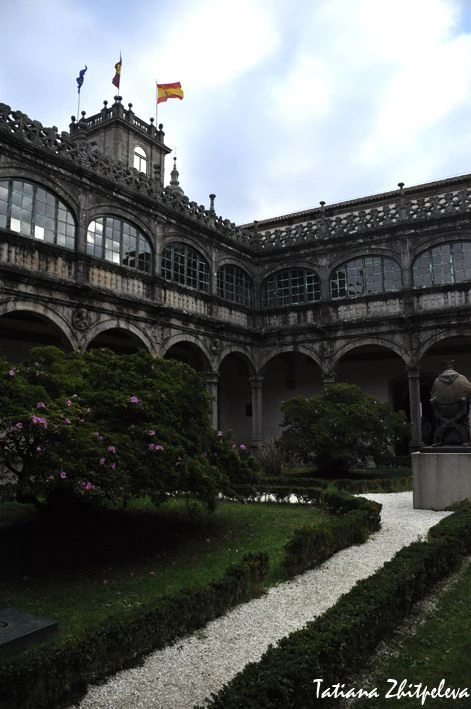
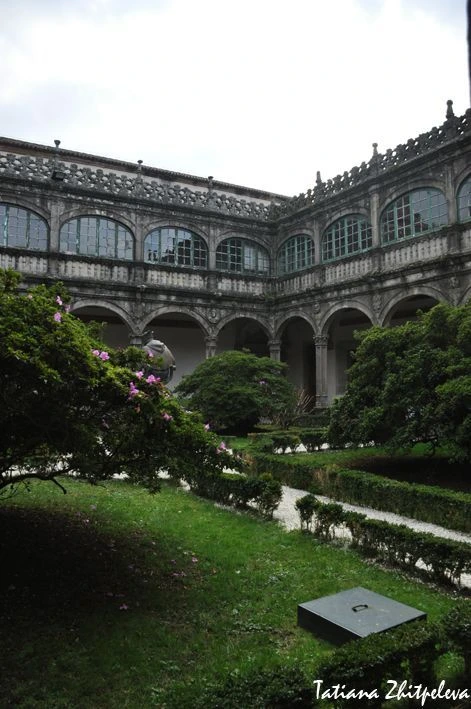
In the yard a lot of interesting details, but in order not to overload the post, brought them all separately.
But back to the cathedral ... Once on this site were found relics of St. James, King Alfonso II ordered the construction of a chapel over the grave, around which soon formed a real tent "city". Therefore, in 840, Pope Leo III special bull commanded to move the bishopric of Ivii in the emerging city of Santiago. The chapel was rebuilt in the basilica and richly decorated. However, the invasion of the Moors lost his connection with the Christian shrine. In 997, the Moors, led by Al-Mansor invaded the north-western part of Spain, capturing Galicia. Christian army was defeated, the inhabitants fled to the neighboring cities of Asturias.
Santiago went without bloodshed. The basilica was demolished, and the values and bells prisoners at the hands of Christians carried in Cordoba - the capital of the caliphate. It is unknown why (they say that it will affect the priest of San Pedro de Mesonso), but the coffin with the relics of Jacob remained untouched. His architect Al-Mansur ordered to erect around the tomb carved stone wall, and the military to protect the shrine from attacks. Fence tomb intact preserved to this day. Survived and bells of the basilica, which today are in Cordoba.
The current cathedral was started in 1075 in the image of the Basilica of Saint Sernin Toulouse. However, at the time the cathedral was more romance. Riot of parts was completed later in the time of the Habsburgs and Bourbons in the 16-18 century (used for finishing the old part of the medieval sculpture ...). By the way, a style called Churrigueresque - late Baroque in Spain, and each facade (they are all different) has its own name. Head, from which we go is also called as the area, El Obradoiro and was built by architect Fernando de Kassas-and-Novoa
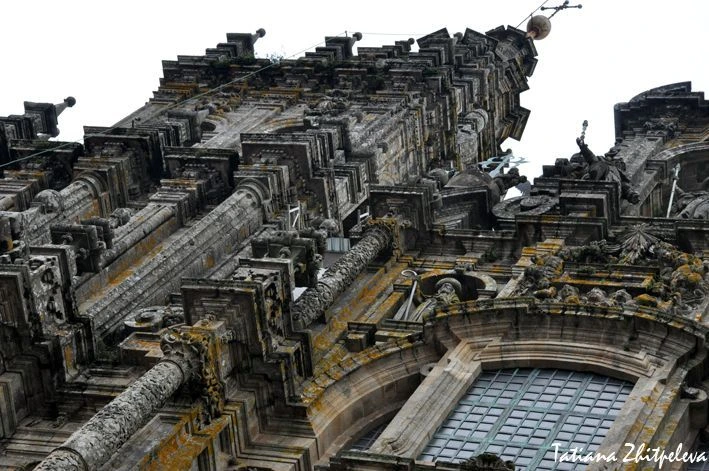
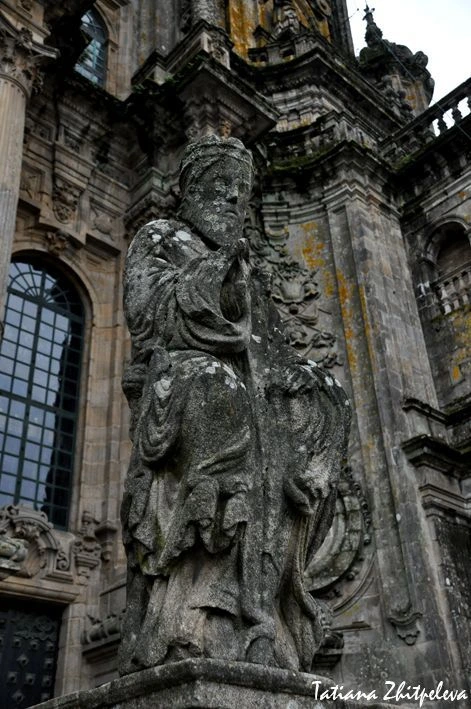
Looking at these sculptures start to feel some power and how many centuries now stand before you ... as the winds are blown, how much rain has passed ...
Let's go inside. Cathedral length of 75 meters, width - 57.
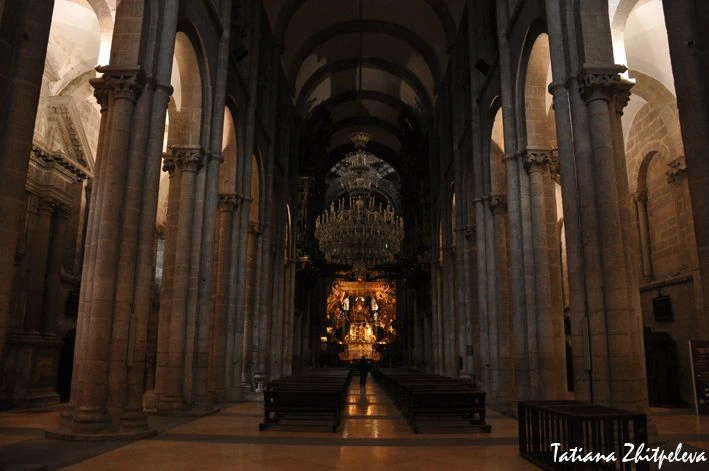
For an ornate altar - a pedestal surrounded by carved stone wall. This is the same fence, which was built on the orders of a true Khalifa Al Mansoura. On the pedestal rises elaborately carved wooden figure of St. James on the throne. His shoulders covered cape woven from gold and silver threads. By Jacob are two staircases. Climbing up on a pedestal, everyone can touch the figure of hand and kiss her on the shoulder. Pilgrims at this point asking for the intercession of the Holy and on the execution cherished desire for which they have done this a long way.
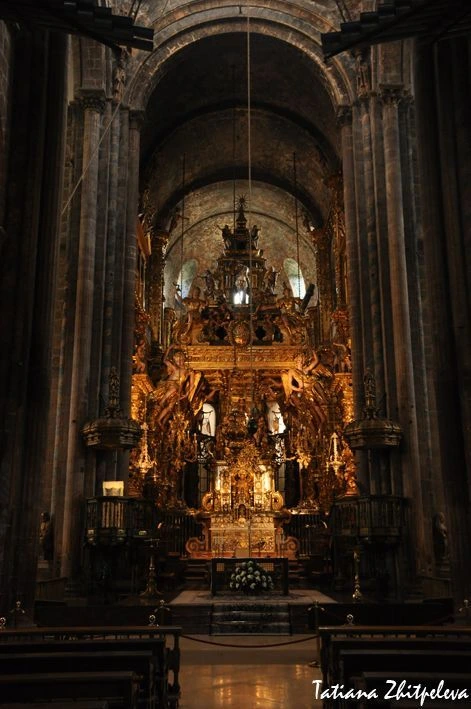
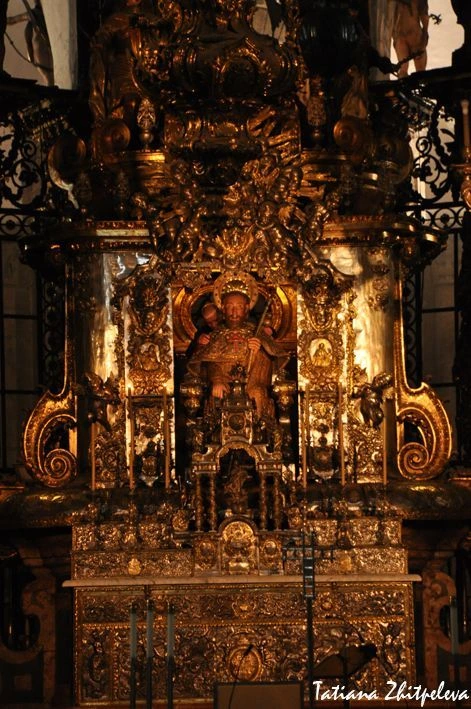
One of the attractions of the cathedral is the world's largest incense size in human growth. It weighs 80 kg and is driven by the rocking of eight ministers (tiraboleiros) in crimson robes. On the content of the censer (known as the Botafumeiro) takes 40 kg of coal and incense. (Pictured Department, canopy, and in the middle you can see the very censer)
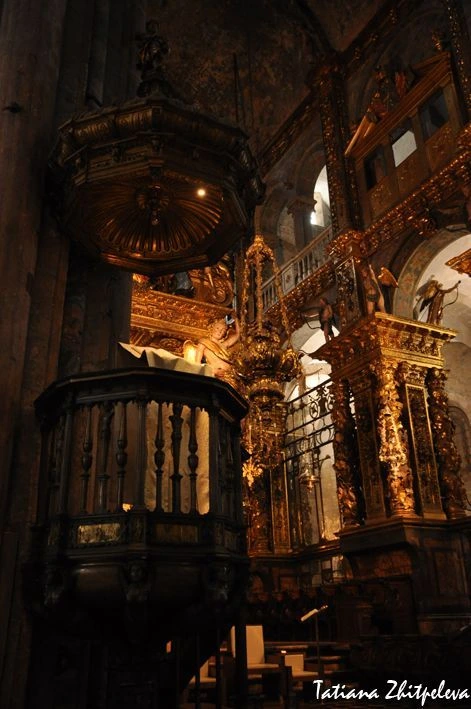
Today, the relics of St. James are in a silver reliquary in the crypt, surviving from the time of Alfonso the Great Temple. In 1589, they were hidden from the English "anti-Armada", but carefully so that then they could not find. The relics were discovered only in January 1879; within five years of their authenticity confirmed by Pope Leo XIII.
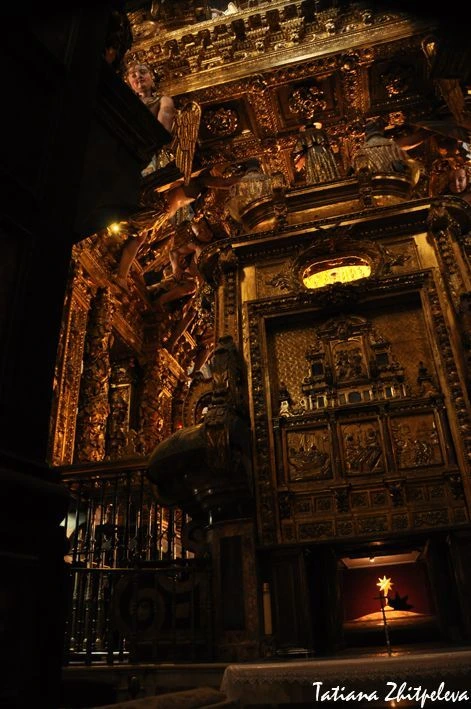
Yet a little walk through the cathedral, breathing the spirit of antiquity and the smell of incense.
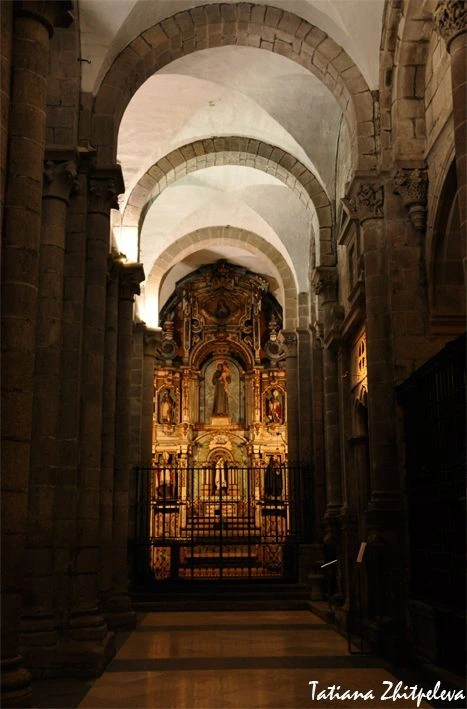
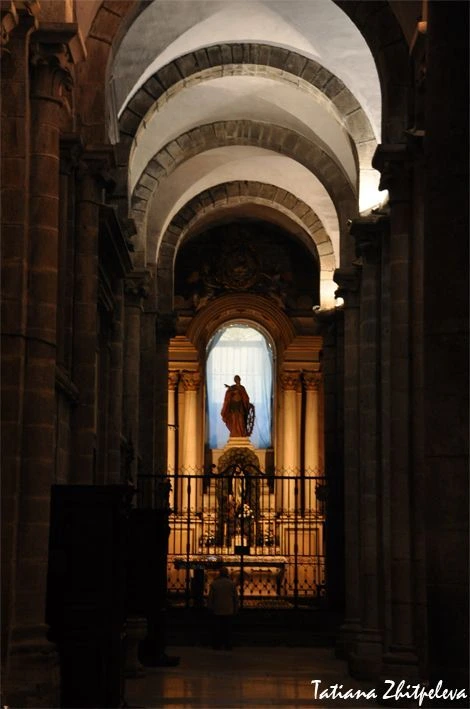
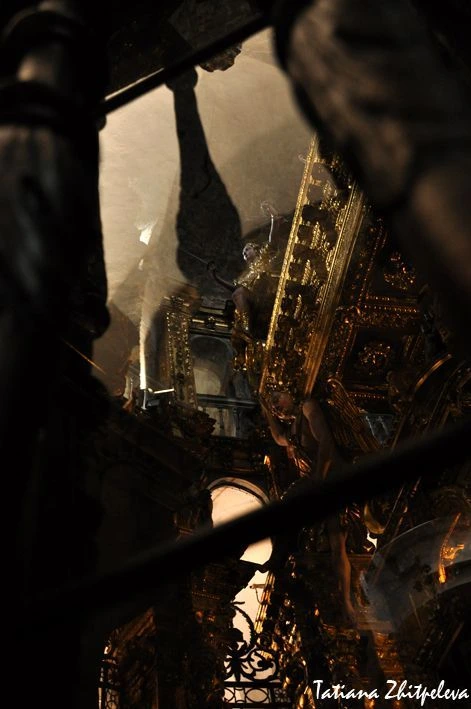
And exit through the north portal of the facade ... This is called Azabacheria and was built in the second half of the XVIII century. In its architecture clearly reflected the transition from Baroque to Neoclassicism.
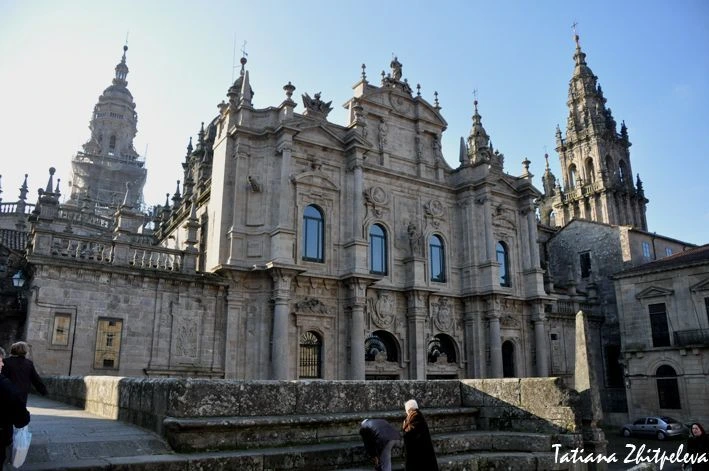
On the contrary there are two 16th-century monastery: San Martin Pinario and San Pelayo (at the entrance to the monastery he sells delicious pastries)
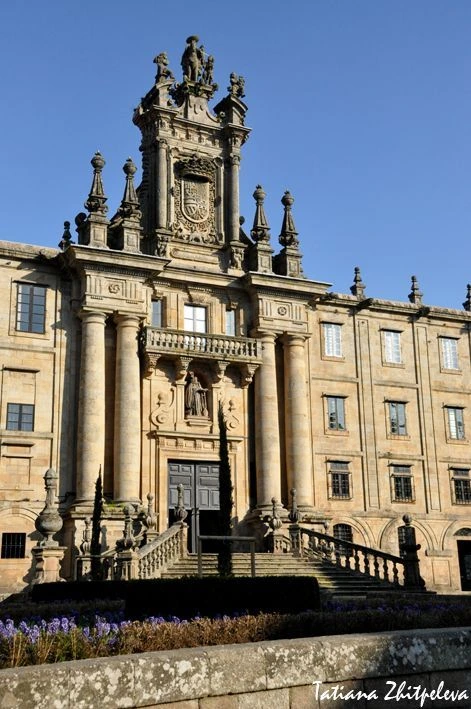
Go around the cathedral to look at the eastern facade - Quintana. It was completed in the second half of the XVII century baroque, but retained the earlier elements from the XII century.
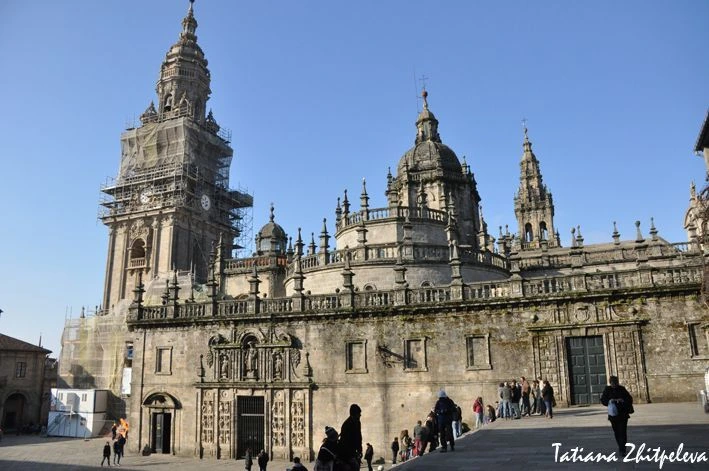
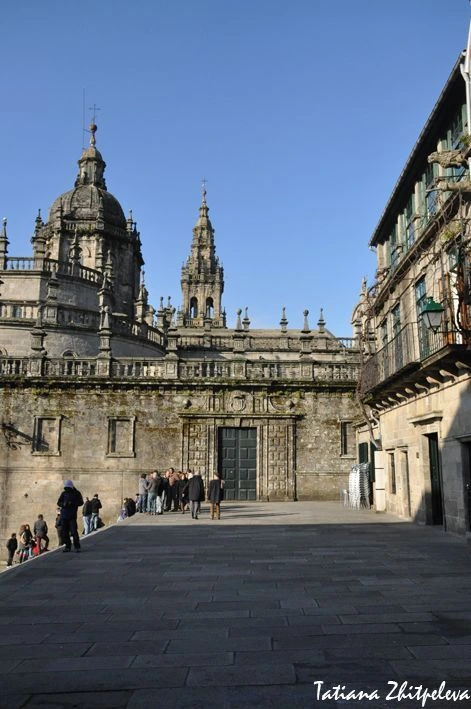
Now just go through the streets
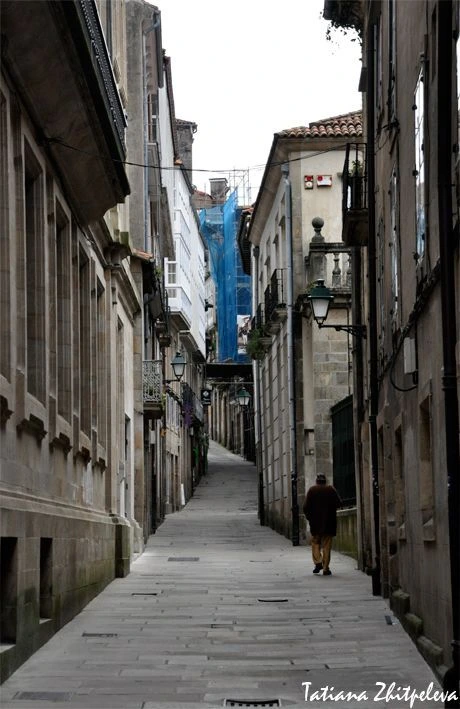
To some extent, similar to Santiago Padua (the whole thing in a huge number of arcades galleries) ... only if Padova - it is rather a playful girl in bright clothes, then Santiago - a canny old man with a weathered hands, and deep wrinkles on the forehead. Yet, perhaps, between them there is "blood" relationship.
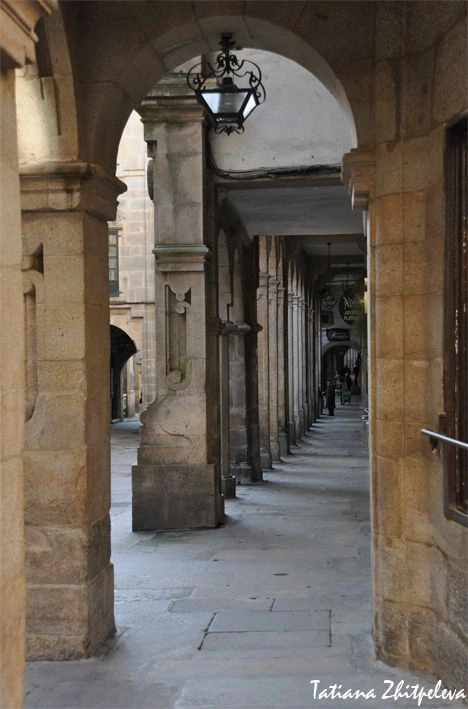
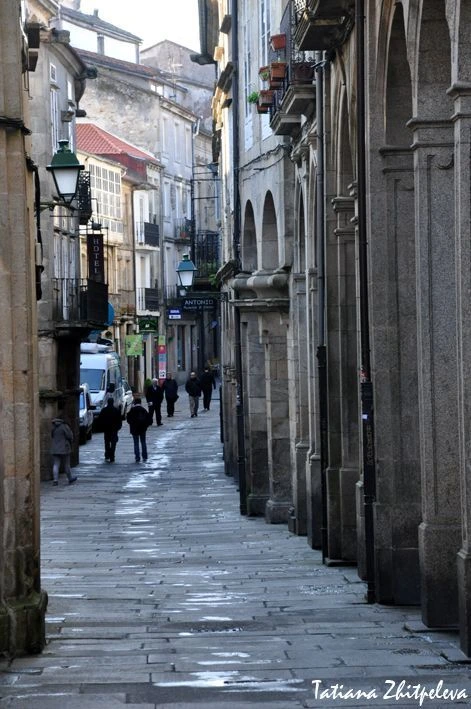
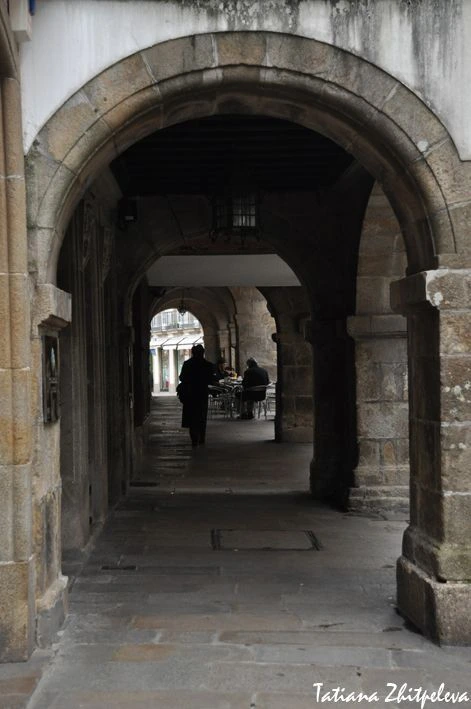
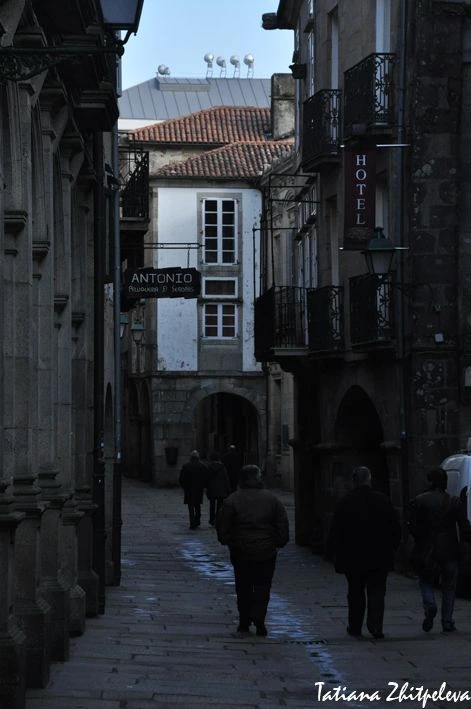
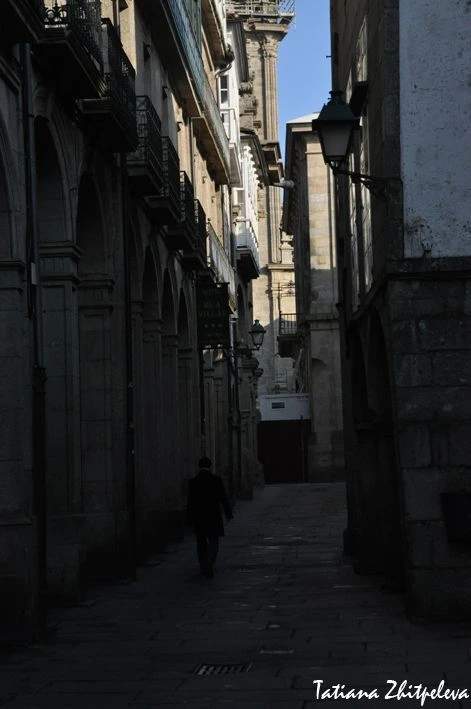
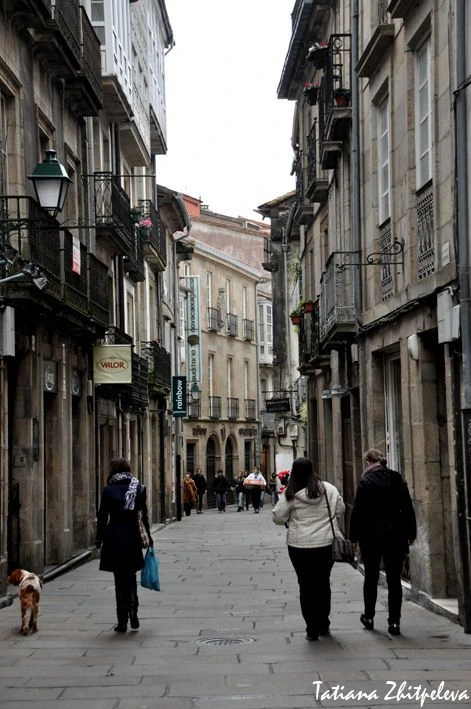
Following the route we went to the Faculty of Philosophy and Church of St. Tatiana, under the supervision of the Faculty of Arts, which was held in places frightening exhibition, which I have already mentioned once. In principle, in our institute designers, too, sometimes fun, but their games are not so much sense ... and then an abundance of symbols (sometimes not even positive) together with the atmosphere of the place is fascinating ...
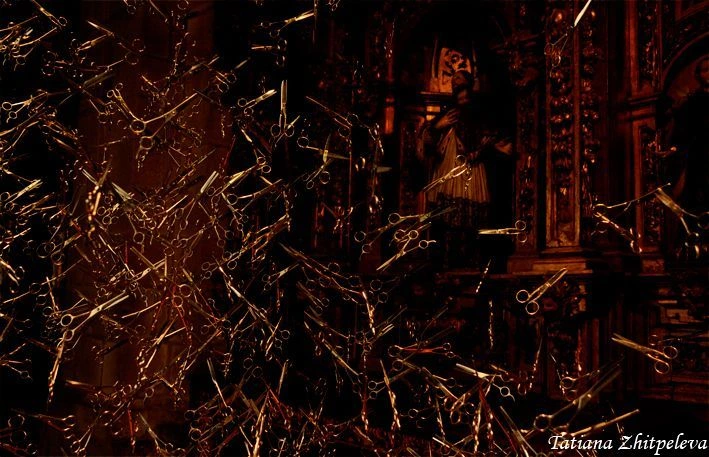
Taking a walk between the old houses, absorbing vast amounts of information, it is easy to get hungry ... So the route is targeted so for dinner we were on the local market, but my attention was attracted by a small building
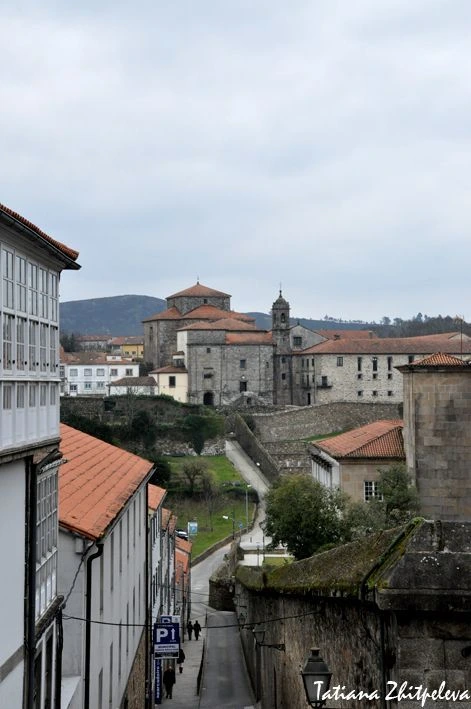
It turned out that this monastery Bellevue (convento de Belvis), which is always ready to shelter under the roof of the pilgrims.
And around it are very nice white house, very different from the rest of the city (if they "come" here from Andalusia)
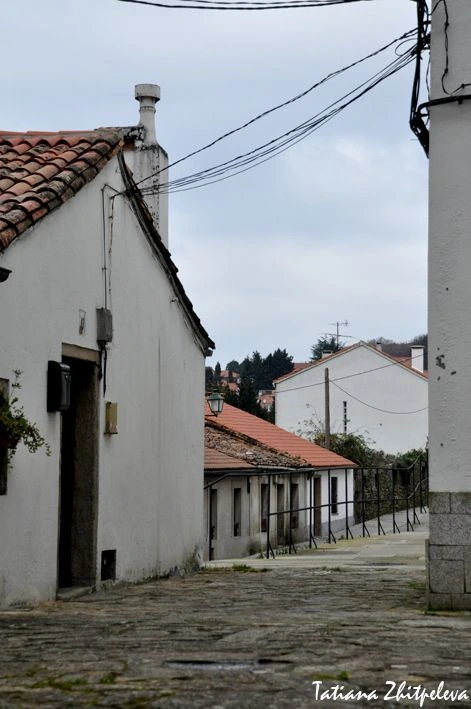
Still, I will pass over quickly food (where did I not) ...
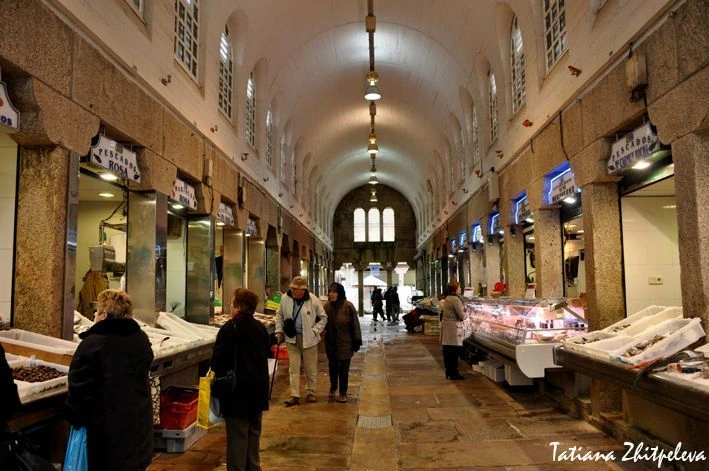
... Then to the other side to go to the church of All Saints (igrexa das Animas).
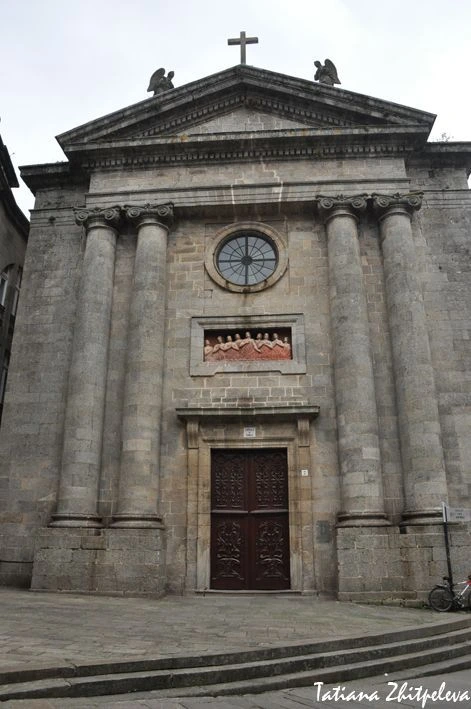
Construction of the chapel of Universal Brotherhood Animas began April 8, 1784 according to the drawings of the architect Miguel Ferro Kaavero under the direction of master Juan Lopez Freire. Lighting of the new church took place on August 31, 1788. Facade of the church was built only in the next century, when the Brotherhood could afford to buy and demolish a number of houses that have prevented its construction.
Further our way will pass Plaza Cervantes (with a monument to him) ...
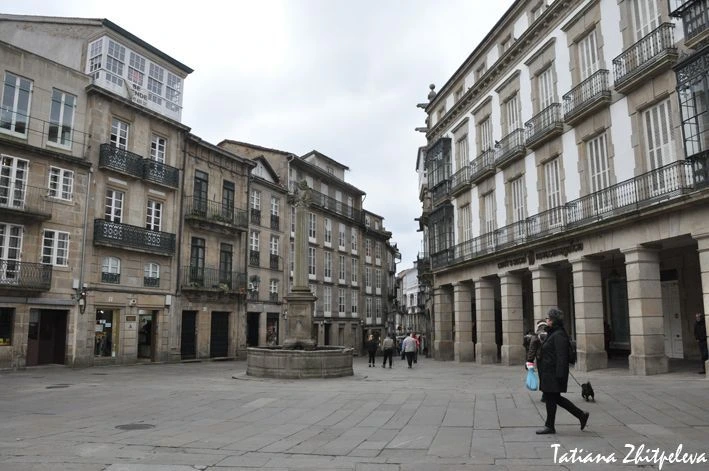
..and here we are again at the entrance to the monastery of St. Martin Pinard, but on the other hand
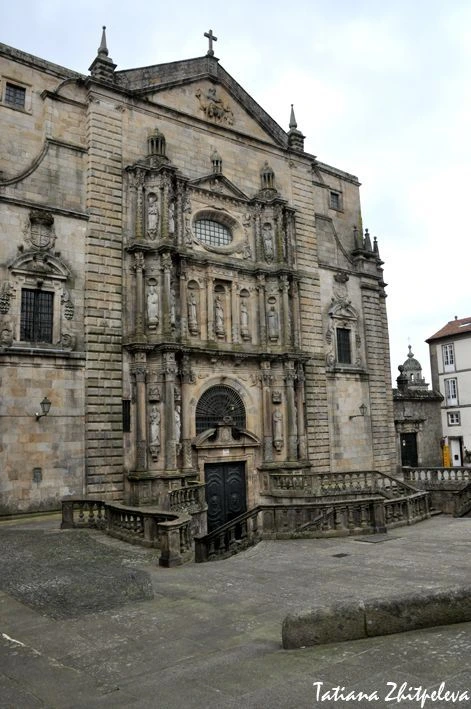
The monastery was founded in the 10th century. to the 15th century turned into the richest and the main monastery of Galicia. It is for this reason that the 16th century it was rebuilt. From the 16th century Monastery of St. Martin Pinario was in charge of almost all the Galician monasteries. Since 1868 in the monastery housed the main seminary Compostelan archbishopric.
Not far from here is the Convent of St. Francis, which was founded in 1214, visited Santiago St. Francis.
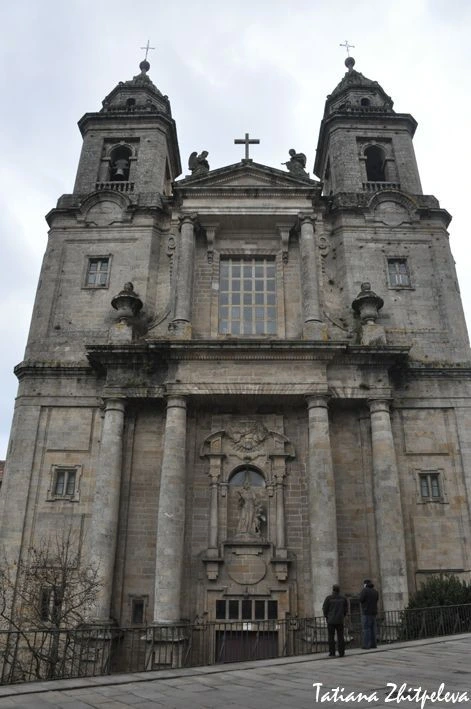
A little more and we are again at the main entrance to the cathedral. It's time to go to the city park Alameda, just to see the city and take a stroll among the fairy trees ...
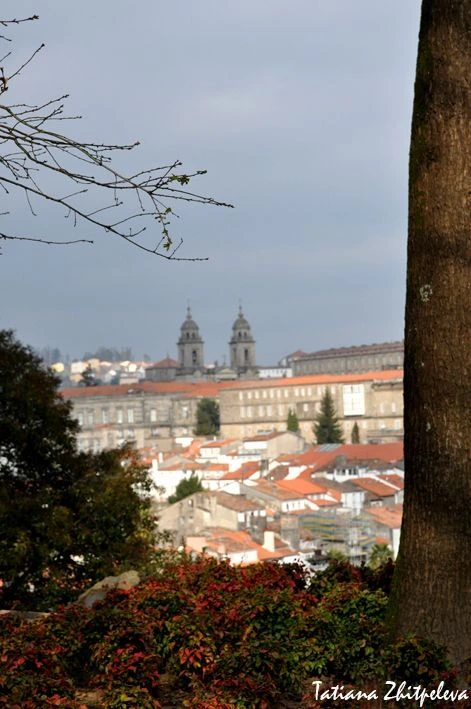
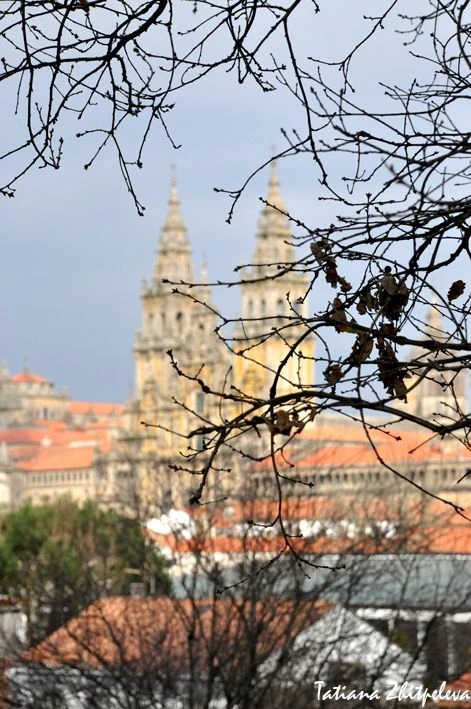
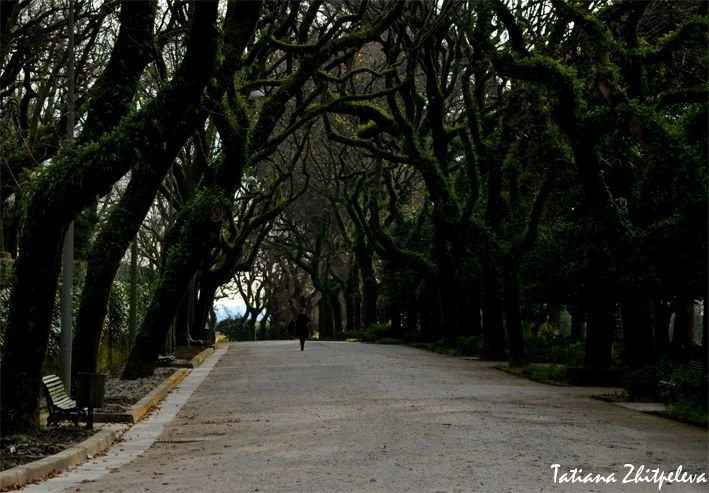
... Which can be seen through the small church of St. Susanna
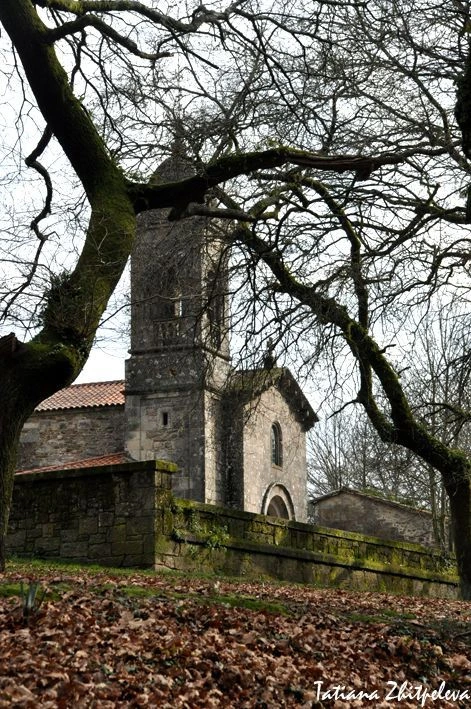
Downstairs at the entrance to the park is worth another small church - the Church of Pilar.
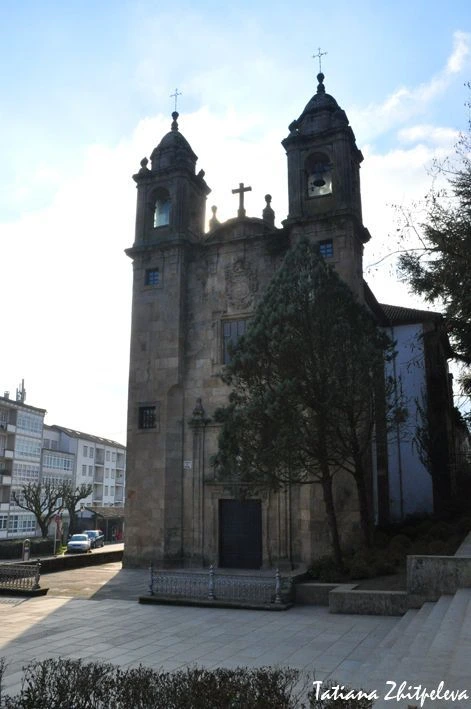
Already getting dark and it's time to go back again to the city to once again see the cathedral and stroll through the streets.
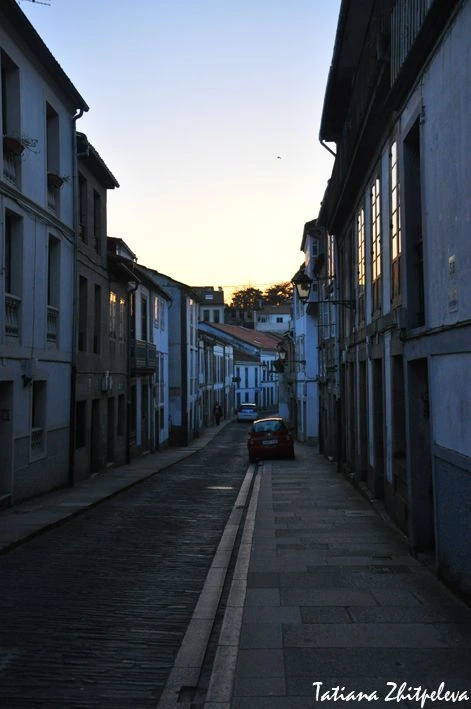
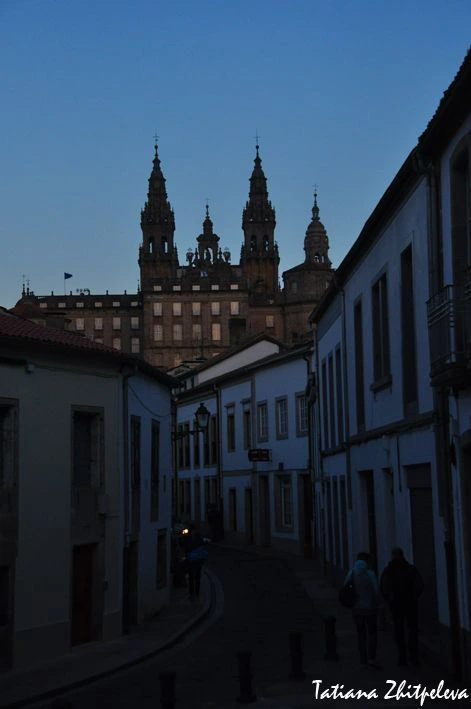

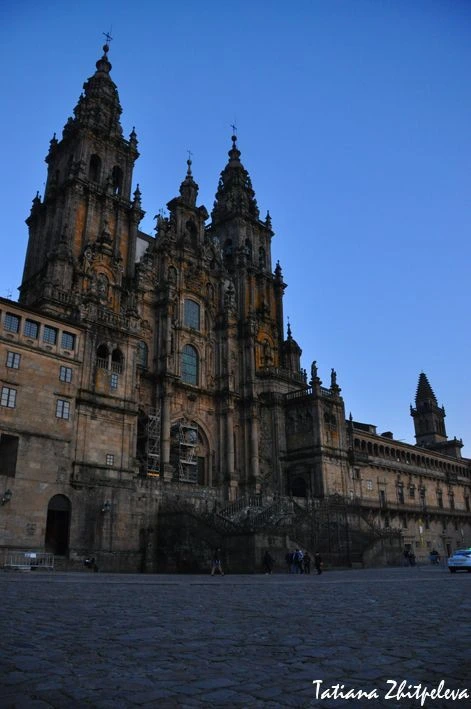
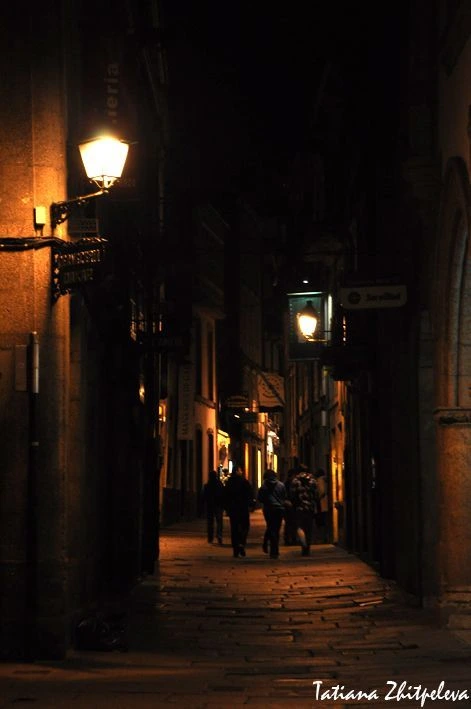
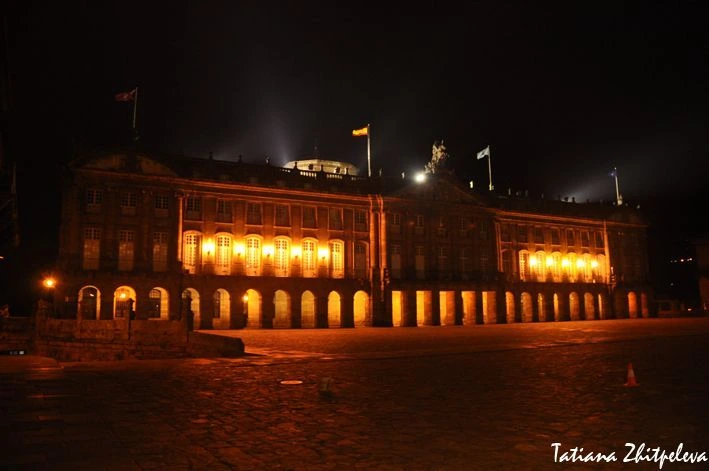
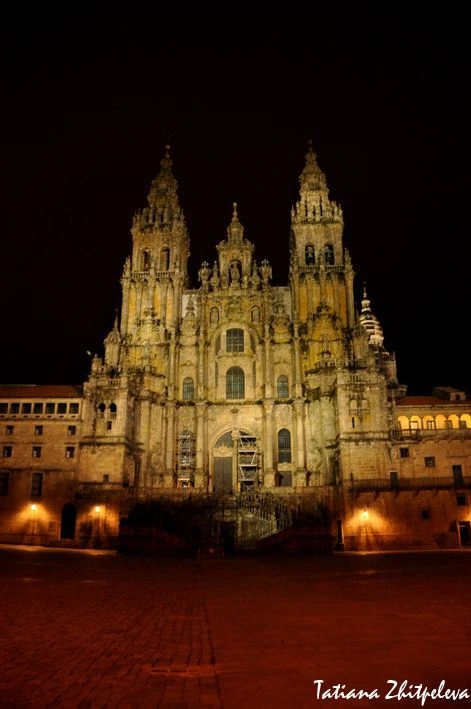
A little later, I take a moment to detail.
And besides, I want to advise ... If you suddenly find yourself in the city and you want to eat madly, not far from hiking trails, there are two restaurants with delicious home-made food and pleasant service.
The first is A Vosa Casa - restaurant keeps a couple of years 60. Despite the fact that we do not speak Spanish, but they do not speak in English, we understood each other perfectly. Receiving more than welcome. Visitors only local (at least for us), but it is still a record.
The second is Las Huertas - restaurant holding two elderly couples (it seemed to me that women - sisters). There are only real local cuisine (no semi-finished French fries I have not seen): Galician soup, meat, local recipes, fresh fish and cakes. The kitchen is ruled by the female half. But at the same time for the dinner, each of them came up to us to inquire whether all is well. With English here was a little better, so it was even easier to communicate.
In general, if a bully, do not pass by.

